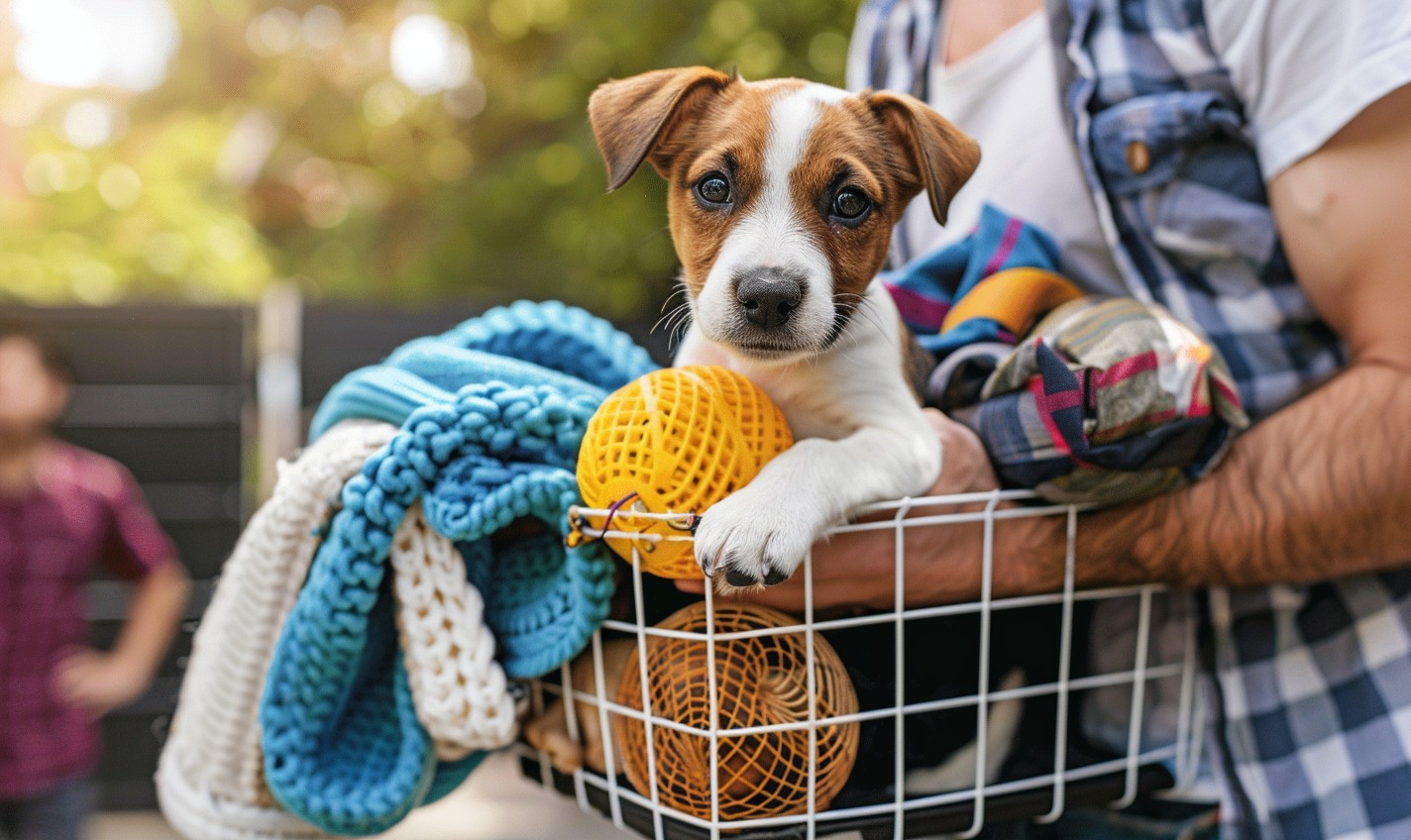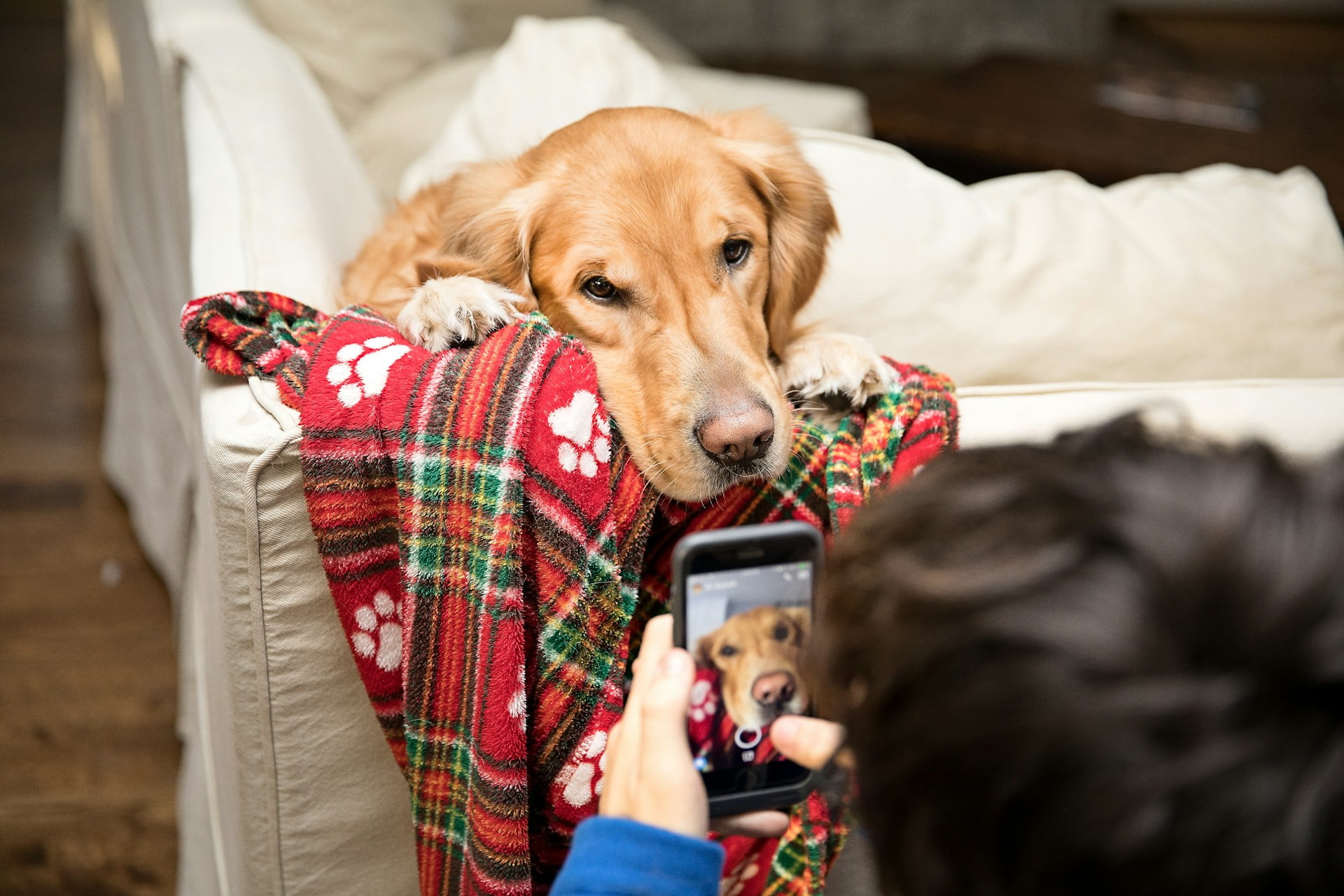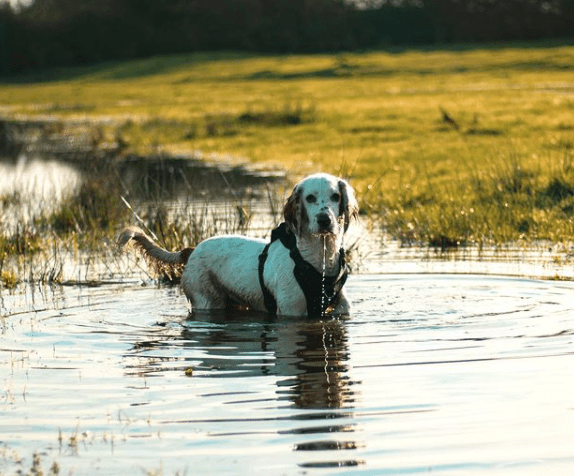
The initial pickup of your puppy is nerve-racking for any pet owner. I still get anxious whenever I get ready to bring a new pup into my home. But I’ve found having a checklist makes it easier for everyone involved.
So I thought I’d share this checklist for anyone who feels overwhelmed. It’ll be a helpful guide to navigating a situation that can cause massive stress. I’ll also offer tips about traveling with the puppy after pickup and preparing your home for their arrival.
These discussions should make this transition a smooth, painless one. You can then enjoy the magical process of having a brand new puppy in your life!
FYI, this post includes affiliate links. If you buy anything through these links, DogVills earns a commission at no extra cost to you.

Checklist For Picking up Your Puppy From the Breeder
The checklist for picking a puppy from a breeder or other facilities is more extensive than people assume. Honestly, I was shocked by how much you need during my first experience. I should also note this list works for picking up a dog from breeders, shelters, or even pet shops.
- Registration Documents or Papers: I’d suggest talking with the breeder or shelter beforehand to get a handle on the paperwork. If possible, this process goes much smoother when these documents or papers are filled out in advance.
- Crate or Dog Carrier with a Blanket Inside: Your puppy will need somewhere to lie down in the car to prevent any issues. It’d be a good idea to purchase a travel crate or dog carrier (some breeders/shelters will provide one). But don’t forget to make it comfortable inside by putting down a blanket or something similar.
- Snacks and Water: Nothing settles a puppy down quicker than something to snack on during the initial traveling. Additionally, having some water in a pet-friendly travel bowl (I love this collapsible bowl from Bonza) will make a significant difference.
- Puppy-Safe Chew Toy: Keeping your puppy distracted during travel is a massive part of making it a bearable experience. A puppy-safe chew toy should get the job done. I’d recommend a Kong or similar option.
- Leash: Never bring a dog anywhere without a leash. You never know when you’ll need to control them for becoming overly rambunctious. Plus, it’s a simple way to ensure you don’t have bathroom accidents if it’s a long drive home.
- Collar with ID Tag: Preparing for the worst is something that dog owners must do. So attach a small collar with an ID tag on your puppy when first getting them. Please make sure it has a space to put your contact information.
- Paper Towels, Wipes, and a Towel: Puppies aren’t known for being good travel companions, especially in cars. These adorable fur babies will relieve themselves or get sick in your car. Some paper towels, wipes, and towels can make these situations much less gross and destructive for your vehicle.

4 Tips for Traveling With Your Puppy
You’ve got all the necessary supplies for the trip, but having them isn’t enough. It’s even more crucial to create a safe, comfortable atmosphere during it. After all, it’s the first opportunity to bond with your new puppy.
You’ll want this trip to be without any unnecessary stressors. Your puppy will be going through enough with all the new sights, sounds, and people. But if you follow these tips, this experience will become as comfortable as possible for them:
1. Ask a Friend or Family Member to Drive
Cultivating a bond between owner and pet begins from the second you get them. So I recommend starting the process in your car ride home. If possible, ask a friend or family member to come along and drive.
You can then sit with your puppy. It’s an easy way to help them get familiar with your scent and create a more relaxed experience.
2. Create a Calm and Stress-Free Environment
It’s not wise to bring your puppy into a chaotic environment during their initial ride home. It’ll only make the entire process more disorientating to them. So do everything possible to cultivate a calm, stress-free situation within your vehicle.
I’d recommend starting by using a quiet, soft voice when talking to them. You’ll also want to pet them gently, which will calm their nerves and lessen any anxiousness. Your puppy should become a lot less disruptive during the ride.
But if they do start causing an issue, place them in a crate or by your feet. These areas should help contain them while alleviating barking or other problems. Lastly, never yell at them if they do something like soil themselves. Remember, they don’t know any better!
3. Never Bring Your Other Dogs
It seems smart to bring your other dogs when picking up a new one. Doesn’t it make sense to get them used to each other as soon as possible? It’s the right thinking, but wait until the puppy gets into their new home and is comfortable.
Otherwise, you’re bringing unknown elements into an already stressful situation. You also don’t know how the other dogs will react to a new puppy. So wait to do any pet introductions until you get into the confines of your backyard or home.
4. Don’t Take Any Detours
There shouldn’t be any detours outside of stops for bathroom breaks. It should be a point A to point B mission to avoid confusing the puppy. Honestly, any stop will create more anxiety for them, so it’s just not a wise move.
You’re much better off going straight from the breeder/shelter to your home. It’ll also limit any opportunities where the puppy may get loose or escape. But again, if it’s a longer ride (over a couple of hours), a bathroom stop or two is suggested.
How to Prepare for Your Puppy’s Arrival
Sadly, your puppy’s initial pick-up and car ride aren’t the entire battle. Owners must also buy certain items and prepare their homes for the dog’s arrival. Here are a few tips to follow that can help cultivate a suitable environment to welcome your new family member:

1. Choose and Buy Healthy Puppy Food
The first item on a new owner’s shopping list should be getting dog food. In the case of puppies, buy some made specifically to meet a puppy’s needs. It’s the only way to promote healthy growth and prevent any issues.
I’d suggest talking with a vet to get some recommendations about brands. They’ll have advice about what puppy foods will suit your specific one. After all, certain breeds do better with different types of food than others.
Additionally, don’t forget to talk with the breeder or shelter about what your puppy’s eating. It makes the process easier if you have a little of their old food before switching to a new one. You never want to switch overnight unless necessary. Dogs aren’t known for handling change too well, especially with food.
Instead, I’d suggest mixing some old food into the new one for a week or two. It’ll help your dog acclimate and ease any transition issues. Doing so should stop diarrhea and other digestive problems from occurring.
Another consideration will be the food’s flavor. You’ll have to do some trial and error to understand its taste. Once you find one they enjoy, stick with it because constantly switching flavors and foods can cause digestion trouble.
Meanwhile, buy a large enough bag to last a few weeks. You don’t want to be worrying about picking up food every week. Plus, it’ll help prevent you from having any ideas about switching to a new food.
2. Stock Up On Essential Care Supplies
Puppy food isn’t the only essential care supply owners have to get before their pet arrives. In fact, the list is often much longer than people assume if they aren’t experienced. But it’s all a part of the learning experience.
So I’ll help you avoid learning too much on the job and provide another new puppy essentials checklist. It’ll get you started with a solid supply list that’s based on your pup’s needs. Plus, it’ll prevent you from taking multiple trips to the pet store right after getting the dog. So here’s what you should stock up on before doing the initial pick-up:
Aside from these items, check with a vet and see what else could be essential. These discussions could offer info about toys or objects that work best for your puppy’s breed. You never know the type of insight that these professionals will provide.

3. Designate a Puppy Room
Puppies need to be eased into your home’s ecosystem. Additionally, you don’t want to rush introductions to family members and pets. It can be challenging because it’s in our nature to want to move things as fast as possible.
However, it’ll only make things more problematic for your new puppy. The best idea is to designate a specific room in your home as the “Puppy Room.” It’ll provide ample opportunity for your puppy to be comfortable with everything.
I’d suggest putting a comfortable bed and toys in the room. These items will increase a puppy’s comfort and give them something to do. Over time, you can start introductions slowly as it becomes clear that the puppy has gained its footing.
But please, don’t start pet introductions without ensuring your puppy has their vaccinations and has been dewormed/treated for fleas. If not, there could be severe consequences that no pet owner wants to experience.
4. Hide All of Your Valuable Possessions
Puppies have a unique talent for getting into things their owners consider valuable. Once they do, the chewing starts and everything gets destroyed. It’s not an ideal situation for the dog or owner.
So before bringing them into your house, relocate all your valuable possessions. You should place them in areas your puppy can’t reach or access. It’ll help remove the possibility of coming home and finding your brand-new Jordans torn to shreds.
I can’t tell you how many possessions I’ve lost to puppy teeth. Please learn from my mistakes and keep these items out of reach. It’ll save everyone a great deal of stress and help redirect your puppy’s chewing habit to more appropriate objects, such as toys!
5. Get Everyone on the Same Page
Nothing can ruin a puppy’s first experience in a home quicker than a family member who isn’t prepared for it; everyone needs to be on the same page. In other words, there needs to be guidelines about how to care for and interact with this new pet.
My first suggestion would be to put the vet and emergency vet service phone numbers in a visible place within your home. If something happens, the person watching the puppy needs to be able to call these places without scrambling around looking for them.
Parents should also have informative talks with their kids about handling the puppy. Your children need to understand how to interact with the dog correctly. Basically, be firm and clear about what actions are allowed with your kids. It’s the simplest way to ensure everything goes smoothly when introducing a puppy into a family home.
Another topic to discuss is understanding the puppy is learning along with them. Everyone needs to be aware that these dogs aren’t trained. There will be bathroom accidents, unpredictable behaviors, and many other challenges. So take all these events in stride and think about what could’ve been done better.
But overall, the key is everyone remains consistent to help your puppy adapt. A similar approach from every family member will help them deal with the transition. It’ll help keep the unpredictable behavior to a minimum.
Conclusion
After reading this article, you should be overly prepared to bring your puppy home. It’s all about ensuring you have the right items for the initial pick-up, car ride home, and preparing the house for arrival. If you do these things, this experience won’t be too stressful.
I’d only suggest trying your best to have a consistent attitude throughout this process. It’ll do wonders in helping your puppy make a seamless transition into their forever home.
Lastly, please let me know how it goes in our comment section. If any questions or concerns pop into your mind, I’d also love to help with them. Thanks for reading, and welcome to the dog owner community!







